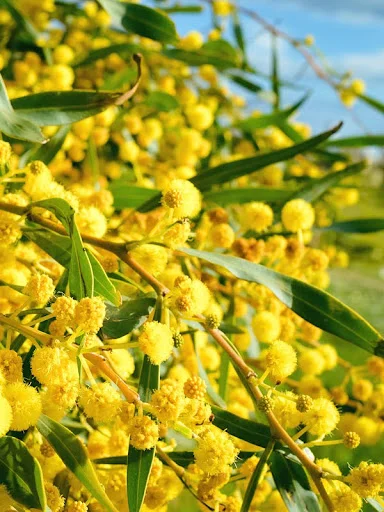Introduction to Acacia Acuminata and Its Significance
Acacia acuminata, commonly known as Raspberry Jam Wattle, is a species of Acacia native to Western Australia. Apart from its distinctive aroma and reddish timber, it has gained attention for its content of N,N-Dimethyltryptamine (DMT), a powerful psychedelic compound. The process of Acacia Acuminata DMT extraction has become increasingly popular among researchers and psychonauts interested in exploring natural sources of this entheogen.
This article delves into the detailed extraction methods of DMT from Acacia acuminata, while also discussing the importance of psychedelic education to promote safe and informed use.
Understanding Acacia Acuminata and Its Chemical Profile
What is Acacia Acuminata?
Acacia acuminata is a medium-sized tree that grows predominantly in semi-arid regions of Western Australia. It produces heartwood rich in alkaloids, including DMT, which is a potent psychedelic known for its rapid and intense hallucinogenic effects.
DMT Content in Acacia Acuminata
The concentration of DMT in Acacia acuminata varies depending on factors such as geographical location, tree age, and harvesting methods. Studies suggest that the bark and heartwood can contain between 0.2% to 1% DMT by dry weight, making it a viable source for extraction.
The Importance of Psychedelic Education
Before diving into the Acacia Acuminata DMT extraction process, it’s critical to emphasize the role of psychedelic education. Understanding the legal, psychological, and physiological aspects of DMT use can prevent misuse and promote respectful, informed exploration.
Psychedelic education involves learning about:
- The history and cultural significance of psychedelic substances.
- Proper dosing and harm reduction techniques.
- The mental health risks and contraindications.
- The importance of setting and mindset for psychedelic experiences.
By integrating education with practice, individuals and communities can foster safer psychedelic use.
Preparing for Acacia Acuminata DMT Extraction
Materials Needed
Before beginning extraction, ensure you have the following items:
- Acacia acuminata heartwood or bark (dried and ground into powder)
- Sodium hydroxide (NaOH) or lye
- Naphtha or other non-polar solvents (e.g., hexane)
- Distilled water
- Separatory funnel or glass containers
- Coffee filters or fine mesh strainer
- Protective gear: gloves, goggles, and mask
Safety Precautions
Handling caustic substances like sodium hydroxide requires care. Work in a well-ventilated area, avoid direct contact with skin, and always add lye to water—not the reverse—to prevent exothermic reactions.
Step-by-Step Guide to Acacia Acuminata DMT Extraction
Step 1: Preparing the Plant Material
Dry the Acacia acuminata wood thoroughly and grind it into a coarse powder. The finer the powder, the more efficient the extraction will be due to increased surface area.
Step 2: Making the Alkali Solution
Mix sodium hydroxide carefully into distilled water to create a strong alkaline solution. This basic solution will help break down plant matter and free the DMT from the matrix.
Step 3: Basifying the Plant Material
Place the powdered Acacia acuminata into a large glass container. Pour enough alkaline water solution over it to fully submerge the plant material. Stir the mixture thoroughly to promote alkaloid release.
Step 4: Heating and Stirring
Gently heat the mixture (around 70°C or 158°F) while stirring occasionally for 1-2 hours. This accelerates the release of DMT from the wood fibers into the solution. Do not boil, as this can degrade the alkaloids.
Step 5: Filtering the Mixture
After heating, allow the mixture to cool. Filter it through a coffee filter or fine mesh to separate the liquid (alkaloid-rich solution) from the plant solids.
Step 6: Extracting DMT with a Non-Polar Solvent
Transfer the filtered solution into a separatory funnel or glass jar. Add an equal volume of naphtha or hexane, then gently shake and allow the mixture to separate into two layers. The non-polar layer (solvent) will contain the DMT.
Step 7: Separating and Repeating
Carefully drain the solvent layer containing DMT into a clean container. Repeat the extraction process 2-3 times with fresh solvent to maximize yield.
Step 8: Evaporating the Solvent
Allow the collected solvent to evaporate slowly in a safe, ventilated space, away from any flames or sparks. As the solvent evaporates, crystalline DMT will remain.
Post-Extraction Considerations
Purity and Storage
DMT extracted from Acacia acuminata may contain impurities or other alkaloids. Some users further purify the crystals via recrystallization for a cleaner product. Store the DMT crystals in an airtight container, away from light and moisture to maintain potency.
Legal Status and Ethical Use
It’s important to recognize the legal status of DMT varies worldwide. Many countries classify DMT as a controlled substance. Always research your local laws and respect them. Ethically sourced plant material and responsible use underpin safe practices.
The Role of Psychedelic Education in Responsible Extraction and Use
Extracting DMT from Acacia acuminata is a complex process that requires knowledge, respect, and caution. Psychedelic education can help individuals understand the profound psychological effects of DMT, appropriate dosing protocols, and how to prepare for the intense experiences it induces.
Educational resources often cover:
- The neuroscience behind DMT’s effects.
- Integration practices after psychedelic sessions.
- Community support and guidance.
By fostering well-rounded knowledge, psychedelic education helps mitigate risks like psychological distress or unsafe use.
Conclusion
The process of Acacia Acuminata DMT extraction offers a fascinating glimpse into natural sources of one of the world’s most powerful psychedelics. However, this journey must be undertaken with a strong foundation in psychedelic education to ensure safety, legality, and respect for both the plant and the experience.
If you are interested in exploring this further, remember to prioritize research, caution, and education. This balanced approach will empower you to engage with psychedelic substances in a responsible and meaningful way.


